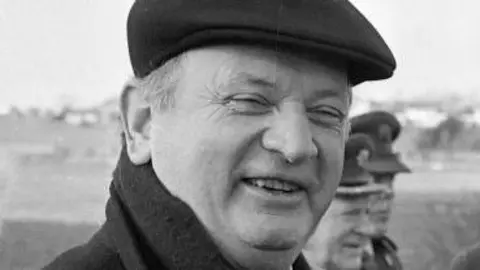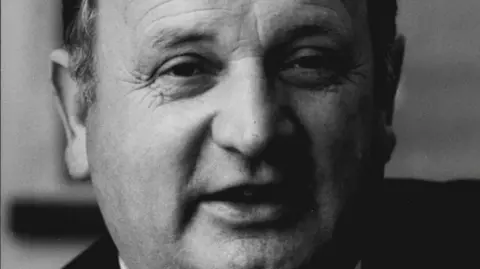Bishop Eamonn Casey's remains removed from Galway Cathedral crypt
 Getty Images
Getty ImagesFormer bishop of Galway Eamonn Casey's remains have been removed from the crypt of Galway Cathedral.
He served as bishop of Galway from 1976 to 1992, and died in 2017.
Multiple allegations of child sexual abuse have been made against him, including by his niece.
He is the first senior cleric to be disinterred in Ireland following posthumous concerns about his conduct, according to Irish national broadcaster RTÉ.
It is not clear when the disinterment took place but the Galway Diocese confirmed that the remains are with his family.
 Getty Images
Getty ImagesIn 1992, it emerged that Bishop Casey had fathered a child with an American woman, Annie Murphy, in 1974.
Last year, Patricia Donovan waived her right to anonymity in a joint investigation between RTÉ and The Mail on Sunday.
She claims her uncle began raping her at the age of five and the sexual abuse continued for years.
Ms Donovan described her "disbelief" over her alleged abuser being buried in the space preserved for senior clergy beneath the cathedral.
The investigation revealed that Bishop Casey was formally removed from public ministry in 2007 by the Vatican, following "allegations" which included his niece's complaint of child sexual abuse.
That restriction continued for the last 10 years of his life but was never publicly known.
The documentary also reported that the Limerick Diocese paid over €100,000 (£86,700) to one of his accusers after his death, in a settlement.
In early 2006, the Irish bishops announced that Bishop Casey was moving back to Ireland from England to retire.
By then, the Vatican had received at least two allegations of child sexual abuse regarding the bishop.
Bishop Casey denied all the allegations against him and he was never convicted of any sexual crimes.
He remained a bishop until his death in 2017 and claimed his removal from ministry was unjust.
'Healing rather than hurt'
In a statement, the Galway Diocese thanked everyone "for their understanding of the situation, for their patience and for their respect as this process was undertaken and brought to a conclusion".
"Significant consensus emerged around the unique role of a cathedral as a place of unity rather than division, healing rather than hurt and peace rather than disquiet," the diocese said.
"We pray that God will continue to draw all those who have been affected by this matter into his healing love."
